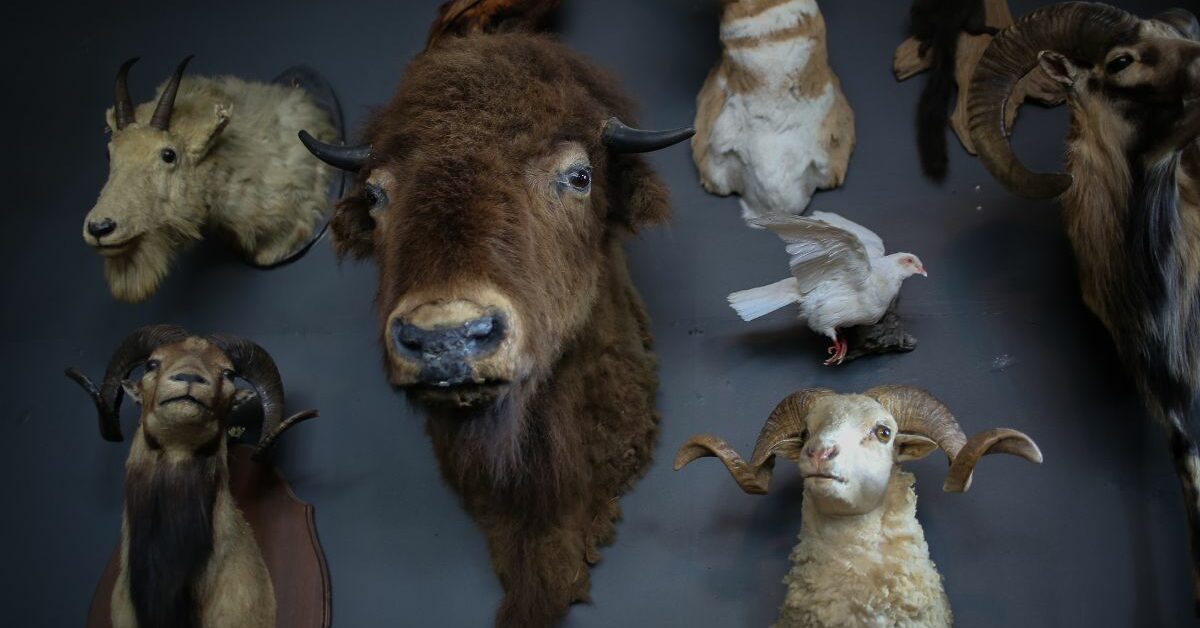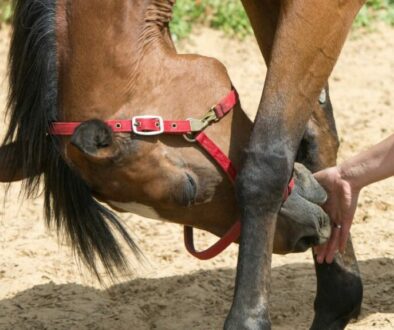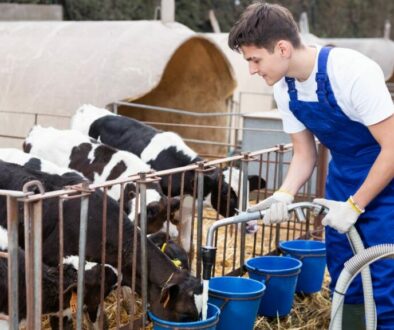How To Become A Taxidermist?
If you have a fascination with wildlife and are interested in preserving them, then you should consider becoming a taxidermist. While this profession may not be for everyone, there is a growing demand for skilled taxidermists who can provide high-quality work. If you are interested in pursuing a career in taxidermy, read on to find out the steps and skills required to become a taxidermist and the benefits of working in this field.
Steps To Becoming A Taxidermist
To become a taxidermist, there are several steps you must follow:
- Develop your artistic skills
A taxidermist must be skilled at sculpting, painting and drawing as these are essential to recreating the features of an animal. It is important that you develop your artistic abilities so you can create a high-quality final product. Take art classes or practice drawing, sculpting or painting in your free time to improve your skills.
When it comes to taxidermy, the details matter. A skilled taxidermist must be able to recreate the exact features of an animal, from the texture of their fur or feathers to the shape of their eyes and nose. This requires a keen attention to detail and the ability to work with precision and accuracy. - Learn animal anatomy and biology
As taxidermy involves preserving animals, it is important to have a good understanding of animal anatomy and biology. Understanding how animals move, how their muscles work and how their bones fit together will help you create realistic poses and anatomically accurate taxidermy.
Additionally, a good understanding of animal behavior and habitats can help you create more dynamic and interesting displays. For example, if you are creating a taxidermy of a bird, you may want to research the types of environments they typically inhabit and recreate a scene that reflects their natural habitat. - Gain practical experience
You can gain practical experience by attending workshops or classes, volunteering at a museum, or even assisting a professional taxidermist. It’s a great way to learn the techniques and skills that are essential to becoming a successful taxidermist.
During your practical experience, you may also learn about the different tools and materials used in taxidermy. For example, you may learn about the different types of foam used to create body forms or the different types of adhesives used to attach fur or feathers. - Specialize in a particular type of animal
Some taxidermists focus on a specific animal or group of animals, such as birds or fish. It is important to decide early on which type of animal you want to specialize in, as it will help you focus your skills and knowledge on that particular group.
Specializing in a particular type of animal can also help you build a niche market for your taxidermy services. For example, if you specialize in creating fish taxidermy, you may be able to attract more customers who are interested in fishing and want to display their catches in a unique way. - Obtain necessary licenses and permits
Before you start a taxidermy business, it is important to obtain all necessary licenses and permits. These may vary depending on your location, so be sure to check with your local authorities to find out what requirements you need to meet.
For instance, in North Carolina, a taxidermy license by N.C. Wildlife Resources Commission (NCWRC) permits individuals to run a taxidermy business, preparing or mounting skins and parts of regulated birds or mammals for a fee. A Federal Migratory Bird Taxidermy Permit by U.S. Fish & Wildlife Service is also required to work on migratory birds or their parts for others.
Additionally, you may want to consider joining a professional taxidermy organization like, National Taxidermists Association (NTA). These organizations can provide you with valuable resources, such as networking opportunities, industry news and updates, and access to specialized training and education.
Skills Needed For Becoming A Taxidermist
To become a taxidermist, you need to have a variety of skills, including:
Artistic ability
Taxidermy involves preserving animals in a lifelike manner, so it’s critical to have good artistic skills. Being able to recreate the animal’s natural pose and expression requires a keen eye for detail and a steady hand. Without this skill, the final product may not look realistic, and the essence of the animal may be lost.
Attention to detail
As a taxidermist, you must pay attention to detail to ensure that the final product is an accurate representation of the animal. This includes everything from the texture and color of the animal’s fur or feathers to the shape of its nose and ears. A good taxidermist will also pay close attention to the animal’s anatomy, ensuring that the finished product looks as close to the real thing as possible.
Patience and perseverance
Taxidermy is a time-consuming and often tedious process, so it’s essential to have patience and perseverance. Depending on the size and complexity of the animal, the process can take weeks or even months to complete. This requires a great deal of patience and dedication to see the project through to the end.
Problem-solving skills
As a taxidermist, you will encounter many problems during the taxidermy process. For example, you may need to figure out how to preserve a delicate piece of skin or how to recreate a missing body part. Solving these problems requires creativity and the ability to think outside the box. A good taxidermist will also be able to troubleshoot any issues that arise during the process, such as problems with the mounting or positioning of the animal.
In addition to these skills, a taxidermist must also have a deep respect for the animals they work with. They must understand the importance of ethical hunting and the responsible use of animal products. A good taxidermist will also be knowledgeable about the different species of animals they work with and the laws and regulations surrounding their preservation.
Overall, becoming a taxidermist requires a unique combination of artistic talent, attention to detail, patience, perseverance, and problem-solving skills. It’s a challenging but rewarding profession that allows individuals to create beautiful works of art while preserving the natural beauty of the animal kingdom.
What is a Taxidermist?
A taxidermist is a skilled artist who preserves animals by stuffing and mounting them for display purposes. The process involves removing the skin from the animal, preserving the skin and fur, and arranging the preserved skin over a brand new form. The result is a realistic representation of an animal that can be displayed in museums or private collections.
While taxidermy may seem like a strange and macabre art form to some, it has a long and rich history. In fact, taxidermy has been practiced for centuries, with some of the earliest examples dating back to ancient Egypt. In those times, taxidermy was often used for religious or ceremonial purposes, with animals being preserved and displayed as offerings to the gods.
Today, taxidermy is still a popular art form, with many people using it as a way to honor and remember beloved pets or to create stunning works of art. In addition to traditional taxidermy, there are also many modern variations, such as freeze-drying and soft-mount taxidermy.
One of the key skills of a taxidermist is the ability to accurately recreate the appearance and posture of the animal being preserved. This requires a deep understanding of animal anatomy and behavior, as well as a keen eye for detail. A taxidermist must also be skilled in the use of a variety of tools and materials, including scalpels, tanning agents, and artificial eyes.
Despite the skill and artistry required, taxidermy is not without controversy. Some people object to the practice on ethical grounds, arguing that it is cruel to kill animals for the purpose of display. Others see it as a valuable way to preserve and honor the natural world, and as a means of educating people about different species and habitats.
Regardless of one’s personal views on the subject, there is no denying that taxidermy is a fascinating and complex art form that requires a great deal of skill and dedication. So the next time you see a beautifully preserved animal on display, take a moment to appreciate the artistry and craftsmanship that went into creating it.
The Benefits of Working as a Taxidermist
There are several benefits to working as a taxidermist, including:
Creativity and freedom
Taxidermy is an art form that requires a lot of creativity and allows you the freedom to express yourself through your work. As a taxidermist, you have the opportunity to turn a once-lifeless animal into a beautiful work of art that can be admired for years to come. You can use your imagination to create unique poses and settings for each piece, making each one truly one-of-a-kind. The creativity and freedom that comes with this job can be incredibly fulfilling for those who are passionate about art and wildlife.
Job security
As long as there are animals in the world, there will be a need for taxidermists. This job security can provide peace of mind for those looking for a stable profession. In addition, taxidermy is a specialized skill that not many people possess, which means that there will always be a demand for skilled taxidermists. This can make it easier to find employment or start your own business.
Satisfaction
Taxidermy can be a very rewarding profession. Seeing your finished product on display can be a source of pride and satisfaction. Knowing that you have created a beautiful piece of art that will be admired for years to come can be incredibly fulfilling. In addition, taxidermists often work with hunters and fishermen, preserving their prized catches for display. The satisfaction of helping someone preserve a memory can be a wonderful feeling.
Flexibility
As a taxidermist, you can work from home or set up your own studio. This can provide flexibility and freedom to set your own hours. If you have a family or other commitments, this can be a huge benefit. You can work around your schedule and take on as much or as little work as you want. In addition, you can choose to specialize in certain types of animals or styles of taxidermy, allowing you to tailor your work to your interests and passions.
Earning potential
The demand for skilled taxidermists is growing, and with it, the earning potential. Experienced taxidermists can earn a good income, and it is possible to start your own business, which can be even more financially rewarding. According to Indeed, the national average salary is around $45,219/year as of 2024. In addition, taxidermists can offer a variety of services, such as restoration and repair work, which can increase their earning potential even further. The more skilled and experienced you become, the more you can charge for your services.
Becoming a taxidermist is a challenging and rewarding profession that involves artistry, anatomy, and preservation. If you are passionate about wildlife and enjoy working with your hands, then taxidermy may be the perfect career for you. With job security, creative freedom, and the potential for financial success, there are many reasons to consider a career in taxidermy.




